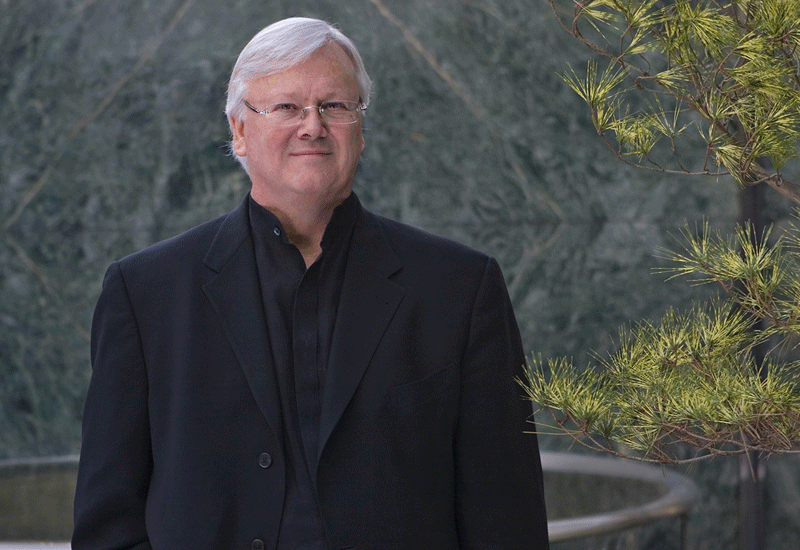

Velocity streamlines around the supertall building. A further reduction was made at a detailed level by utilizing wind relief slots that mitigate forces developed due to vortex shedding. Using a baseline rectangular extrusion, the various tapered versions produced an approximate reduction of 5% of the total force magnitude whereas a stepped version reduced the total force magnitude by 26%. The team’s preliminary analysis indicated that, for this particular site, reducing the mass of the top of the building by stepping back the form was more effective at mitigating the wind loads than if they were to taper the building, a fact that was revealed through the design iteration and simulation process. Optimizing the building’s form at this stage could potentially minimize the amount of structural material and in turn the associated embodied carbon needed for construction. This process allowed for an accurate relative comparison of the various iterations which led to further shaping and refinement models. The team then performed simulations on multiple design schemes to quickly evaluate the overall wind force experienced by the structure. Within SimScale, the team set up the initial site conditions and evaluated the dominant prevailing wind directions. The aerodynamic considerations of the building’s final design. Therefore, it is critical that the form of the building is developed with aerodynamics (wind engineering) in mind. In supertall buildings, the forces and acceleration experienced by the structure are heavily influenced by the form of the building. The team at AS+GG leveraged SimScale during a design competition of a supertall building in Shenzhen, China. SIMULATION SET UP ON SIMSCALE Optimized Building Form at an Early Stage Specifically, the team at AS+GG recently began using the software’s new collaborative features, allowing them to share, view, and edit projects across team members in one common platform.
#Adrian smith architect chicago update#
Multiple shapes can be simulated and compared simultaneously.Īs AS+GG increasingly integrated SimScale into its design process, the team found that the cloud based software was constantly being improved, with new features being added within the platform without the need to redistribute or update any software. Pressure distribution on the supertall building facades. Wind tunnel testing would also be used during later phases to support engineering efforts. This allowed AS+GG to submit designs that would prove to have a high level of accuracy. Additionally, the team at AS+GG gained more confidence in their simulation results, thanks to both the user-friendly platform as well as the expertise of SimScale’s staff, who offered best practices, case studies, articles, and other resources throughout the onboarding process. How They Solved It with SimScale Boosting Accuracy and Speedīy simulating designs with SimScale, AS+GG shortened design cycles, going from initial sketch to simulation results in less than a few hours. Its ability to run on multiple GPUs in parallel enables turnaround times that are 20-30 times shorter than with traditional methods. Developed by Numeric Systems GmbH, Pacefish® is a revolutionary implementation of LBM tailored to the massively-parallel architecture of GPUs. The lattice Boltzmann method (LBM) solver integrated into SimScale was the ideal solution for this.

AS+GG needed to combine speed, accuracy, and ease of use. At the same time, the team found that working directly with simulation tools often required a steep learning curve or could yield questionable calculations, especially given the team’s limited expertise with computational fluid dynamics (CFD) and its application to forces like wind. This timeline made working with external simulation consultants difficult, as turnaround times often required several weeks, leaving no room for design iterations.

The timelines during the competition phase can be tight, often as short as one month, to design and optimize proposals. Transient vertical velocity contour through the building notches.


 0 kommentar(er)
0 kommentar(er)
